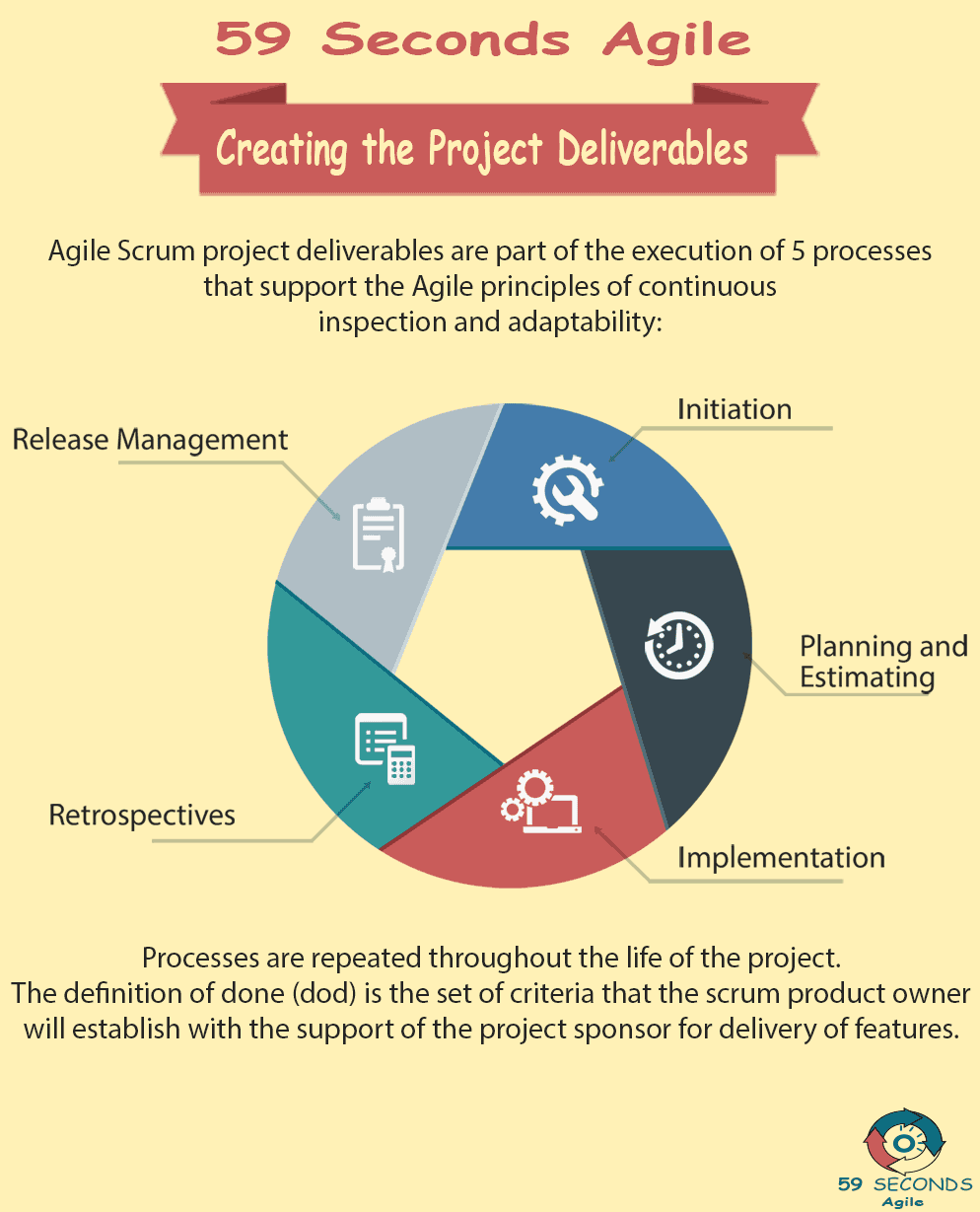What are project deliverables and how do developers go about creating project deliverables? Who Else is involved in the process?
Agile Project Deliverables
A 59 Seconds Agile Video Animation
Creating the Project Deliverables for Developers
A 59 Seconds Agile Article
Project deliverables are the smallest unit of output created in the Agile Software Development world. However, what exactly does “project deliverable” refer to? And what is the developer’s role in the process of creating these product deliverables?
Creating Project Deliverables: What is a Project Deliverable?
In software application development, a project deliverable is a working piece of software that an organization gives to stakeholders. Exactly what this looks like depends on the organization and the project. For some products, a single project deliverable may be perfectly usable on its own. Products that are larger, with more individual parts and pieces, may not see as much value in a single product deliverable. However, any project deliverable is operational on its own. Unless a piece of software can function on its own, or with what has already been produced, it cannot be classified as a project deliverable.
Many project deliverables may be improved with future deliverables, but they must be able to at least function alone. A single deliverable does not have to satisfy all needs of stakeholders. The point of the product backlog is to get the most valuable pieces to stakeholders first, but some functionality remains to be created in future sprints. When stakeholders receive a project deliverable, they should be able to use it as it is.
What Goes into Creating Project Deliverables?
The process of taking a stakeholder request and turning it into a working product in the form of product deliverables is a long and complex one. First, the Scrum team must come up with user stories for a product request. By breaking a large request into several smaller parts, the team can focus on one feature at a time. It would be impossible to finish a large and complicated product in the course of a single sprint. User stories allow the team to build pieces within the course of a sprint. The team can then give the resulting project deliverables to the stakeholder’s piece by piece.
Creating Project Deliverables: User Stories
Once user stories have been established, the team can create tasks for a user story. Where a user story describes a feature, tasks are what must happen to make the feature a reality. These tasks include programming assignments, testing assignments, and other administrative tasks that may be involved. If all tasks for a user story are completed, there should be a working piece of software to show for it.
After all, tasks are created, the team completes these tasks. Developers write code for a project deliverable to the best of their ability. When the programming tasks are finished, testers verify that the software works according to specifications. Once the software is created and tested, it is packaged up and given to the stakeholders.
The “deliverable” portion of a product deliverable is getting a piece of software into the hands of stakeholders. Modern software development offers a variety of ways to deliver software products. Traditional methods such as disk-based media still work in many cases. If stakeholders have the appropriate drives and don’t mind waiting for physical mail, the Scrum team can send out a disc at the end of a sprint with all of the most recent product deliverables. Many organizations are turning to downloads for product deliverable access. Stakeholders can be authorized for access to a certain download URL, or even receive product deliverables directly via email.
Prev <— Continue Reading —> Next
Learn More: Scrum Projects
User Stories Applied
A 59 Seconds Agile Book Review
User Stories Applied by Mike Cohn is one of our favourite books on Agile User Stories. The book starts with an overview into user stories, and details what a user story is and the different aspects of them. He then discusses how to go about writing a user story, and provides details of the INVEST criteria that can be used to determine if the story is meeting all of its objectives. Next Mike gives an in depth discussion of who user stories are written for and where to begin when gathering the details for them. The book then discusses acceptance testing user stories, including how to go about specifying these criteria and the responsibilities of the development team and customers during this process.
Prev <— Continue Reading —> Next
Learn More: Scrum Projects
Creating the Agile Project Deliverables
A 59 Seconds Agile Infographic

Prev <— Continue Reading —> Next
Learn More: Scrum Projects
Our Favourite Agile Books
We found these books great for finding out more information on Agile Scrum:

